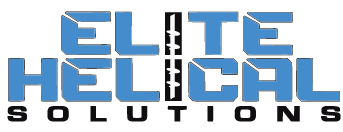Erosion control is important in protecting both the environment and your construction project from a number of hazards, and it’s one of the services we do best here at US FUSION. But when our clients come to us needing an erosion control system, they’re often unaware of all the different types available to them. Let’s take a closer look at a couple common types of erosion control systems, so you can make a more informed decision about what’s best for your application.
What Is an Erosion Control System?
An erosion control system is a solution put in place to prevent wind, water, or sediment erosion. In most cases in industrial facilities, it’s used to manage stormwater runoff, scour, mitigate water pollution, provide protection and/or ballast of a liner system, protect underground pipelines, build protection berms, or protect property.
Some erosion control systems are installed to temporarily reduce the risk of erosion while a project, like a newly constructed building, is carried out. However, many other erosion control systems are implemented permanently, in order to protect an area from erosion in the long term.
Either way, these systems are manufactured with durable materials and installed with expert precision so that they are capable of handling whatever conditions they may encounter.
4 Types of Erosion Control Systems
Now that you know what erosion control systems are and what they do, let’s take a look at some of the different types available.
1. Fabric-Formed Concrete
Fabric-formed concrete is made by pumping highly fluid concrete into specially woven fabric “forms”, which look like mattress sections with patterns customized to fit the needs of your application. Fabric-formed concrete allows for fast, cost-effective installation, and its superior woven-fabric technology makes it a quality choice for any construction application. Fabric Form concrete can also include cable-reinforced mattresses to resist some of the more erosive forces.
2. Concrete Canvas®
Concrete Canvas® is a fairly new construction material to the erosion control industry. It’s a flexible, concrete-filled geosynthetic material that hardens upon hydration to form thin layers. It’s also known to be one of the fastest erosion control systems to install — but it’s important that it’s installed and hydrated properly to ensure maximum protection.
3. Grouted Riprap
Grouted riprap is a cement-adhesive mixture that is essentially used to bind rocks together. It’s commonly placed over geotextile to prevent erosion undercutting along ditch, channel, and shoreline banks. In some applications, grouted riprap is accompanied by filters and bedding for a higher level of security.
4. Shotcrete
Using shotcrete for erosion control involves spraying concrete (wet or dry mix) at a high speed to reach a certain compaction or density level. Since shotcrete is strategically sprayed by a professional, it requires less initial framework than other types of erosion control systems. This also means it’s a bit more economical than other systems.
Common Erosion Control System Applications
Erosion control systems are ideal for applications where managing sediment is critical to ensuring safe and stable environmental conditions. Some of the most common of these applications include:
- Bridge piers
- Stream banks
- Drainage ditches
- Shorelines & seawalls
- Embankments
- Dams & spillways
- Retaining ponds
- Landfill caps
- Ports & harbors
- Lakes & reservoirs
If you’re looking for a reliable, stable, and long-lasting erosion control system, talk to US FUSION. We offer a variety of effective products, including our unique Protex™ solution. With over 35 years of experience in the industry, you can trust us to find the right product for your application. Call us or contact us online to get started.







